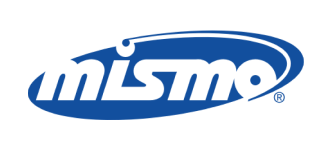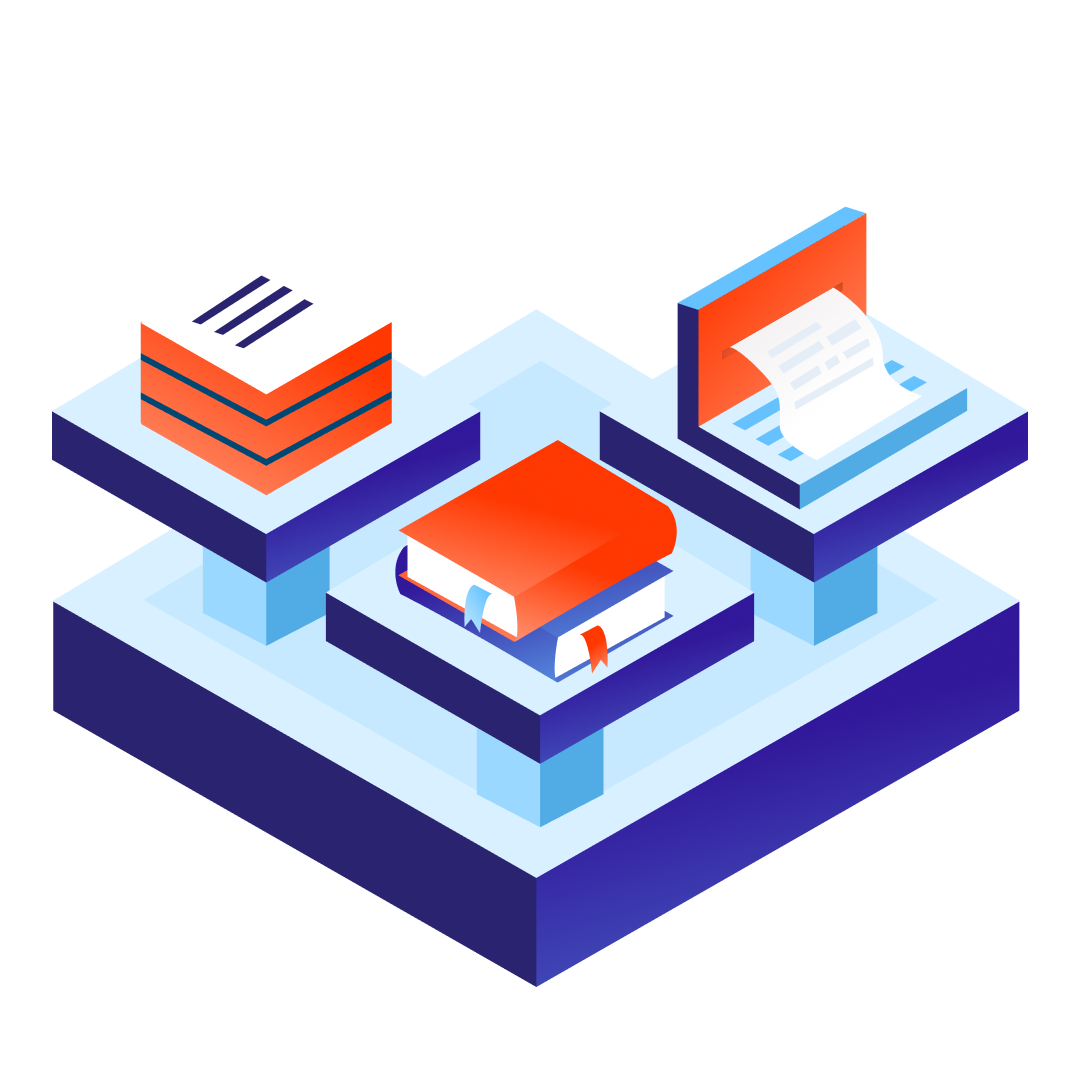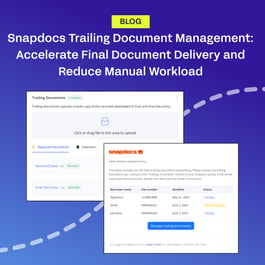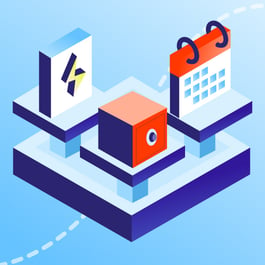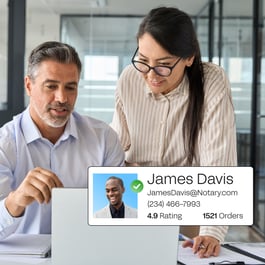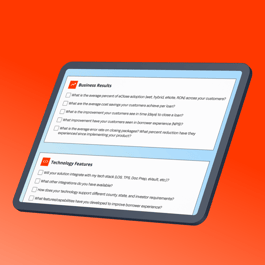Welcome to Mortgage Industry Trailblazers, our ongoing interview series with innovative, forward-thinking professionals in the mortgage industry, hosted by Camelia Martin, Snapdocs’ Head of Industry and Regulatory Affairs. The series will take a look at the problems and solutions the industry is facing, through the eyes of some of its top leaders.
Complexity is, without a doubt, the biggest challenge the mortgage industry faces. Complexity exists everywhere, whether it’s choosing the right technology solution, or implementing it and guiding an organization through change. It might be navigating the labyrinthine sets of rules and regulations that sometimes vary county by county, or simply staying on top of the constantly changing needs and wants of borrowers. Lenders face complexity every day they’re in business.
The Mortgage Industry Standards Maintenance Organization (MISMO) exists, in part, to counter all that by adding a layer of transparency and consistency to how all the various parties in the industry operate. MISMO is a not-for-profit subsidiary of the Mortgage Bankers Association (MBA) responsible for developing standards for exchanging information and conducting business in the mortgage industry. It works hand-in-hand with parties from all corners of the mortgage industry to develop standards and practices that guide how it operates in order to make the industry more transparent and less complex.
Jonathan Kearns is MISMO’s VP of Technology, tackling the Herculean task of working with the industry to develop standards and guidance for how to better build and implement software. We talked with him about his long career, both building technology and in helping the industry create better ways to adopt and use technology.
Below is a lightly-edited transcript of our conversation.
Camelia Martin: Jonathan, you've had an incredibly interesting career that has almost always involved some aspect of digital mortgage closings. Can you tell us a little bit more about your career path, how has it led you to the role that you're in today at MISMO, and maybe more importantly, what MISMO does?
Jonathan Kearns: My work with digital mortgages started back in 1999, believe it or not. I met two women who had the idea to create a digital signature solution, so we started a company together (called SignOnline, later acquired by Wave Systems) that built not only one of the first electronic signature solutions for the mortgage industry, but also one of the first eVaults. That's how my career started. My claim to fame is probably that I’m the only person in the industry that has built two different eVault solutions.
Moving over to MISMO was a new and exciting way to be able to change the industry. Digital mortgages are becoming more prevalent. The usage of data itself instead of paper inside the mortgage industry is becoming more prevalent and so MISMO is much more important. MISMO has had data standards for 20 years – you cannot do a mortgage in the US without utilizing the MISMO standards, but nobody really knows that and nobody really understands how often it's used. We make it easier to utilize and exchange data between the different entities that touch a mortgage during its life cycle.
Another part of MISMO’s mission is collaborating to solve industry challenges. For example, we worked with multiple parties in the industry to create language around a new law about taxpayer consent so that everybody can comply with the new law in the same manner so that all investors accept it. We were able to do that in less than 60 days.
That’s the core of what MISMO is and does: we facilitate the industry coming together to collaborate and solve challenges in the mortgage industry. There's only seven of us that actually work at MISMO – there were only two before I joined – but there are over 250 companies that have individuals volunteer their time inside MISMO to create the standards. So you – the mortgage industry – are what creates the industry standards. We just facilitate that vehicle.
Camelia Martin: Snapdocs is a long-standing MISMO member and we participate in several work groups. I've had the opportunity to co-chair several of them, and also serve as a Senior Advisor to MISMO. And I know you were attending MISMO work groups and summits well before you joined MISMO. For those that may not be familiar, how would you describe what MISMO does and the importance and benefits of participating in MISMO?
Jonathan Kearns: MISMO depends on work group participation, which is what we call Communities of Practice for each industry segment – origination, title and closing, secondary, servicing – and that's where the industry comes together and solves problems. They collaborate by creating development work groups in order to solve each challenge, whether it's a technical challenge or a business challenge. Using that same taxpayer consent as an example, that wasn't a technical challenge, it was a legal challenge. So we had a bunch of lawyers and compliance people on the development work group. A lot of times, though, challenges are technical and there’s no need to have business people in the group talking about XML schemas, so they break it out into development work groups and actually do the work products in those.
Camelia Martin: Shortly after joining MISMO, you helped launch two new digital mortgage closing technology certification programs: the MISMO RON certification, and most recently the MISMO eClosing systems certification. I'm a big believer in the transparency and consistency in tech requirements as a mechanism to increase the industry's confidence in that technology, and in turn the adoption of digital mortgage closings. Snapdocs is a proud proponent of these certification programs – we're a MISMO certified RON provider and eClosing platform. What was the catalyst for MISMO to launch these certifications and what can we expect to see for MISMO next?
Jonathan Kearns: It's all about interoperability. We think about creating clarity and transparency in the industry through the use of standardization. We created the RON certification because we really want to focus on digital mortgages because of the interoperability issues there. Lenders did not know how to pick a solution because there were so many out there and more being created, especially as the pandemic accelerated adoption. How could they know which met all of the framework and legal needs? The MISMO community – which again is you all in the industry – had already built standards and best practices for what RON platform should do. So, MISMO simply built a certification program around what the industry had deemed as a standard for RON platforms. It has been super successful and helped lenders choose technology platforms, and also helped underwriters and other industry people who accept and utilize RONs to understand whether they meet and comply with RON standards as well.
The catalyst for everything we do is interoperability. We're trying to solve these interoperability challenges by building more standardization to create transparency and clarity around trading digital mortgage documents and data. We're doing the eClosing certifications for that same reason, and we're exploring an eVault certification, because there's a lot of interoperability challenges there as well. The digital mortgage space isn’t just about adoption anymore, it's about scalability. If you go look at the MERS® eRegistry list, there's almost a hundred lenders on there now that have done an eNote, but not all of them are doing eNotes at scale. As an industry, we're still at around five percent of total mortgages closed as eNotes.
Of course, the other side is that lenders have a hard time understanding what documents and loans they can do electronically, and how electronic those can be. There are many different factors that come into play: Who your investor is, what state and county the property is in, who your warehouse lender is , where does servicing go, etc. So we're launching an industry utility that stores all of this information in it for the lender, so they can easily see at the time of creation – really at the time of the initial disclosures – how digital that closing can be.
Camelia Martin: Let’s switch gears and go back to you. The digital mortgage closing landscape looks totally different than it did just a few years ago. We have over 1.4 million eNotes registered on the MERS eRegistry, 39 states, and over 2,315 counties now allowing eRecording. I think it's safe to say that we're at a point where some form of full eClosing is achievable almost anywhere in the US. Your work was focused on digital mortgage and eClosings when these numbers were far smaller, and yet you clearly saw the massive opportunity early on. How does it feel to see this type of progress now?
Jonathan Kearns: I will say, it wasn't true persistence, that made me stick around – in fact, sometimes it was out of ignorance. If I really knew it would take this long, I'm not sure I would have stuck around all the time. But, in the end, it is a passion. We were trying to change the way the industry does business. That's the thing about digital mortgages. It's not just a technology, it's a business transformation process. So, that's what's really exciting about it, and why it's been great to see how many companies are now getting on the digital mortgage bandwagon and seeing the value in it. It's tough to see the value of it at the beginning, because it's a big investment. Again, it's not just a technology tool, it's a business efficiency tool, but in order to gain those business efficiencies, you must change your business processes.
It's super exciting to see where we're going because we've seen adoption. We've got over the adoption hurdle and we're seeing consistently that 4 to 6 percent of all loans are done with eNotes. We want to see eNotes at 50 percent, and then eventually 100 percent. That's the scalability challenges we're solving as an industry right now by providing standardization. That’s what's exciting to me.
Camelia Martin: That's such an important point. The investment in the technology has to be met, or even trumped, by the investment in the business process re-engineering for it to really be effective. Like you said, eligibility is a tool to surface where we still have some inconsistencies and drive that uniformity to make adoption and scale even more achievable.
Jonathan Kearns: Yes. Especially if you can determine that eligibility at the front of the loan transaction versus at the end. Today we're doing it at the end, when the closing docs are ready. Well, can we do this? Can we do it there? And it's too late, they're ready to close. The buyer wants their house. It has to be done upfront. When you're doing your disclosures, checking e-Eligibility should just be part of that. How electronic can you do this loan? Electronic should be the norm, and paper processes should be the exception. That's where we want to get to.
Camelia Martin: Then you're able to maximize digitization efforts if you're able to do it at that transaction level – and to your point not treat it as an exception.
Jonathan Kearns: That's right, and there were a lot of things that changed over this last year that really helped that. The biggest things were that Ginnie Mae and several of the Federal Home Loan Banks now accept eNotes. That opens things up a lot. As a lender, if I could only do 30 percent of my business with eNotes, did it make sense for me to do it? Now, many can do 75 to 80 percent. Another hurdle was the aggregators, and now the majority of the aggregators are also accepting eNotes.
Camelia Martin: Next we have to focus on the PLS market!
Jonathan Kearns: That's right. We'll get there. We're working on it.
Camelia Martin: If you were speaking with a lender that was on the fence – they're hearing all of this and seeing it as added complexity, they're seeing it as areas that they don't have a lot of familiarity with and perhaps they don't have the experience that others have had when they've gotten started with eClosings sooner. And maybe they're on the fence about implementing, or maybe they're in the process of selecting technology providers. What advice would you give them?
Jonathan Kearns: If they're on the fence of doing digital mortgages, my first piece of advice would be to jump in. Pick a program and start with it. Doing traditional paper all the time is not an option. In the surveys that we do, we see over 50 percent of lenders are doing some level of hybrid. Consumers are expecting it. Start small, then decide what you're going to do and build your process and efficiencies with your closing teams, your title partners, and get that done.
Next, don't overthink picking a technology partner. You have technology today and the technology that you use probably already has partnerships with somebody out there. Don't go change your whole stack because that's a long, hard process. The majority of the time, you can easily add one or two new technologies to your existing stack because those partnerships exist.
Lastly, I would obviously look at MISMO-certified vendors. That tells you that the company cares about industry standards and interoperability.
Camelia Martin: Having a MISMO-certified vendor as a starting point takes a significant burden off of vendor management teams that have to already evaluate security protocols and other things, without having to get into the nuance of the specific requirements associated with these technology platforms in digital mortgage. That's critical.
Thank you for the insight into mortgage technology as it has changed over time. We’re excited to see how MISMO continues to bring the industry together as technology becomes an even more central part of what we do every day.

